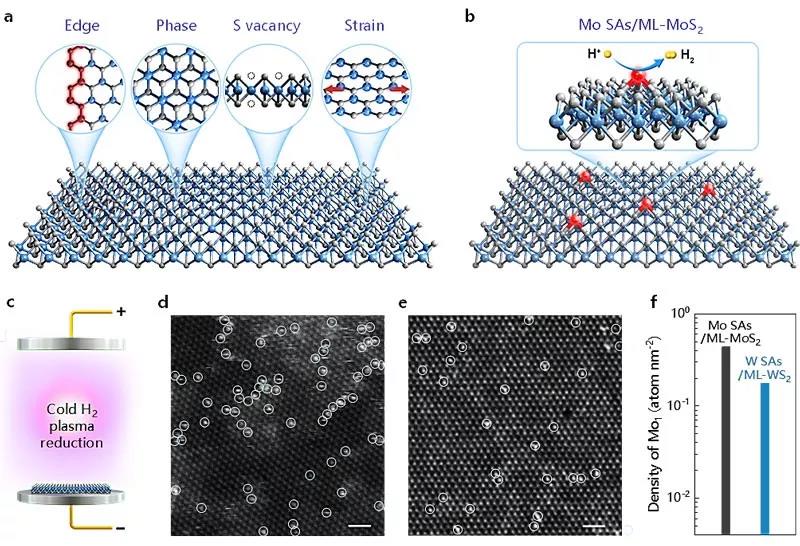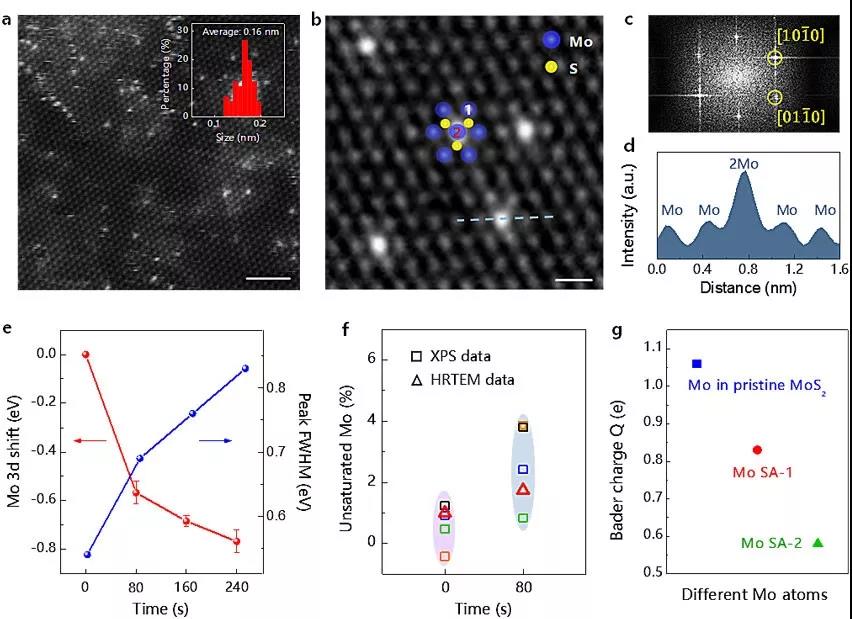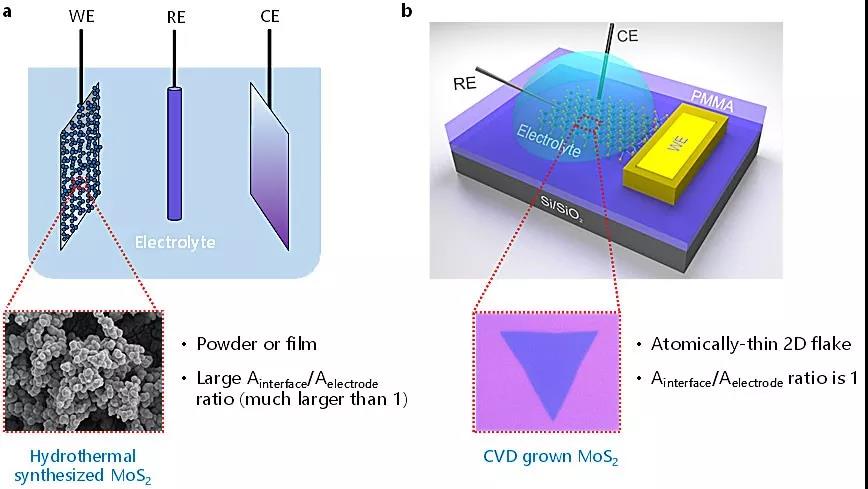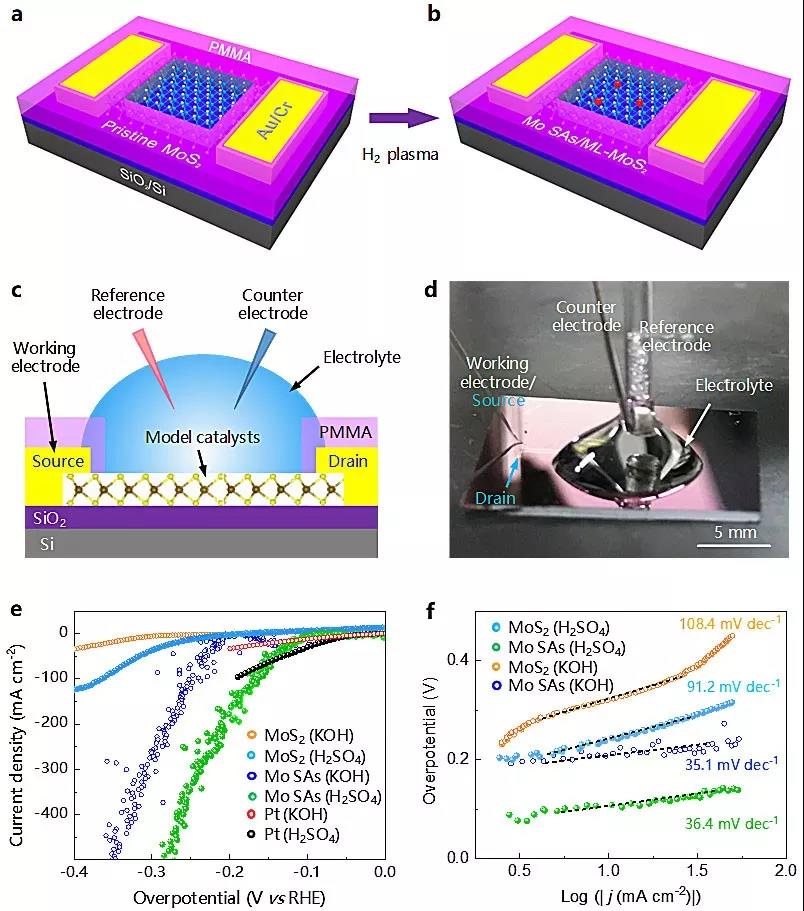
hotline:
17715390137
Tel/Wechat:
18101240246 (Technology)
0512-68565571
Email:mxenes@163.com (Sales Engineer)bkxc.bonnie@gmail.com
Scan the code to follow or search the official account on WeChat:
2D Materials Fronrier After paying attention,
click on the lower right corner to contact us,
Enter enterprise WeChat.
Professional Services Online

ACS Nano | Monoatomic / Single Layer 2D Materials: Plasma Preparation of 2D Model Electrocatalyst
English title: Unsaturated Single Atoms on Monolayer Transition Metal Dichalcogenides for Ultrafast Hydrogen Evolution
Corresponding author: Liu Bi record, Zou Xiaolong (Tsinghua - Berkeley Shenzhen Institute); Lin Junhao (South University of Technology)
Author: Yuting Luo, Shuqing Zhang, Haiyang Pan, Shujie Xiao, Zenglong Guo, Lei Tang, Usman Khan, Bao-Fu Ding, Meng Li, Zhengyang Cai, Yue Zhao, Wei Lv, Qinliang Feng, Xiaolong Zou, * Junhao Lin, * Hui-Ming Cheng, and Bilu Liu *
At present, the energy crisis and environmental pollution are becoming more and more serious. The technology of electrolytic hydrogen production is one of the important strategies to deal with this problem. However, excessive power consumption and high precious metal catalyst materials (such as platinum, iridium, ruthenium, etc.) have seriously hindered the development of electrolytic water technology. Therefore, developing electrocatalysts with high intrinsic electrocatalytic activity and understanding their working mechanism have become the core challenges in this field. In recent years, as a highly efficient catalyst, monoatoms have higher catalytic activity and better stability than nanoparticle catalysts, and have received widespread attention. However, the monoatoms obtained by the existing methods for preparing monoatomic catalysts are often supported on a bulk or multi-layered support, which makes their chemical environment and structure very complicated, which is not conducive to mechanism research.
Recently, Tsinghua-Berkeley Shenzhen College Liu Bilu, Zou Xiaolong‘s team and Southern University of Science and Technology Lin Junhao team worked together to develop a new universal method for the preparation of monoatomic catalysts-low temperature plasma treatment, which solves the problem of supporting monoatoms in various Challenges on single-layer 2D materials. By processing two-dimensional transition metal chalcogenide compounds, they obtained two-dimensional materials loaded with different kinds of homologous monoatoms of metals, and their clear structures can be used to study the catalytic mechanism. The results show that, while maintaining the structure of the single-layer two-dimensional material intact, different types of single metal atoms (such as molybdenum and tungsten with a density of 1013 atoms cm-2) supported on the two-dimensional material can be obtained. At the same time, combined with the test of a single piece of molybdenum disulfide microelectrochemical reactor, they found a new active site of molybdenum disulfide electrocatalyst, namely molybdenum monoatomic / monolayer molybdenum disulfide, which has a small Tafel slope (36.4 mV dec-1) and low overpotential (260 mV @ 400mA / cm2) are among the best performing MoS2-based catalysts reported. The theoretical calculation results show that the hydrogen adsorption energy on the molybdenum monoatomic / monolayer molybdenum disulfide is close to 0 eV, which has excellent hydrogen adsorption / desorption kinetics. This work provides a universal method for preparing and studying monoatomic / two-dimensional material model catalysts, which not only has guiding significance for designing efficient electrocatalysts, but also provides a new idea for studying the mechanism of monoatomic catalysts.
 Figure 1. Monoatomic / monolayer two-dimensional material heterojunction system prepared by low-temperature plasma treatment.
Figure 1. Monoatomic / monolayer two-dimensional material heterojunction system prepared by low-temperature plasma treatment.

Figure 2. Structure and chemical characterization of molybdenum monoatomic / monolayer molybdenum disulfide materials
 Figure 3. Principles of intrinsic activity studies of monoatomic catalysts on monolithic two-dimensional materials
Figure 3. Principles of intrinsic activity studies of monoatomic catalysts on monolithic two-dimensional materials
 Figure 4. Molybdenum monoatomic / monolayer molybdenum disulfide miniature electrochemical reactor model and electrocatalytic performance test
Figure 4. Molybdenum monoatomic / monolayer molybdenum disulfide miniature electrochemical reactor model and electrocatalytic performance test
 Figure 5. Theoretical calculation results of Gibbs free energy and state density for hydrogen adsorption on the catalyst surface
Figure 5. Theoretical calculation results of Gibbs free energy and state density for hydrogen adsorption on the catalyst surface
This achievement was recently published on ACS Nano. Tsinghua-Berkeley Shenzhen College doctoral student Luo Yuting and postdoc Zhang Shuqing were co-first authors of the article, Tsinghua-Berkeley Shenzhen College Liu Bilu, Associate Professor Zou Xiaolong and Associate Professor Lin Junhao of Southern University of Science and Technology were co-corresponding authors.
Original text (scan or long-press the QR code and go straight to the original page after identification):

Unsaturated Single Atoms on Monolayer Transition Metal Dichalcogenides for Ultrafast Hydrogen Evolution
Yuting Luo, Shuqing Zhang, Haiyang Pan, Shujie Xiao, Zenglong Guo, Lei Tang, Usman Khan, Bao-Fu Ding, Meng Li, Zhengyang Cai, Yue Zhao, Wei Lv, Qinliang Feng, Xiaolong Zou, * Junhao Lin, * Hui -Ming Cheng, Bilu Liu *
ACS Nano, 2019, DOI: 10.1021 / acsnano.9b07763
Publication Date: Dec. 13, 2019
Copyright © 2019 American Chemical Society
(This manuscript is from ACS Publications)
Source-WeChat public: X-MOL Information

| Reminder: Beijing Beike New Material Technology Co., Ltd. supplies products only for scientific research, not for humans |
| All rights reserved © 2019 beijing beike new material Technology Co., Ltd 京ICP备16054715-2号 |